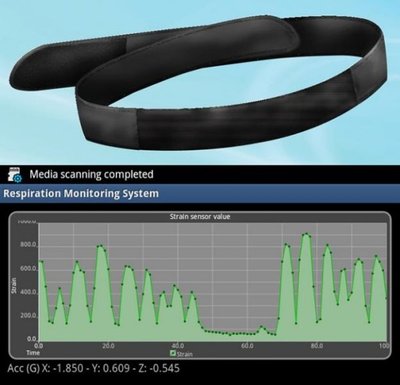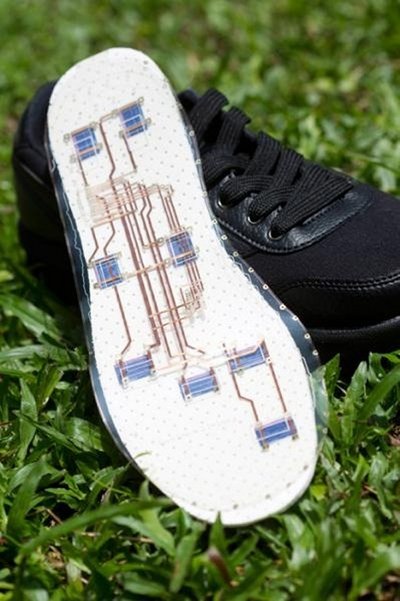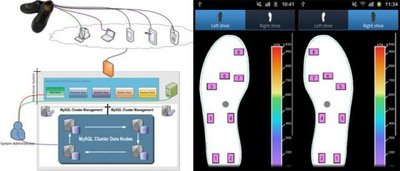Stretchable electronics
Sensors and other electronics are usually made of rigid and stiff material such as metals and plastics - they cannot be stretched, twisted or thrown and should be handled with care. But that is about to change with the advent of stretchable electronics.
Researchers from the Institute of Textiles and Clothing at The Hong Kong Polytechnic University have engineered a new fabric that can both conduct electricity and drape comfortably around people’s bodies.
The pressure-sensitive fabric is made of flexible polymers and nanocarbon materials. Through an advanced fabrication process, conductive nanocarbon materials were laced onto polymer to create a thin layer that can transfer electricity. When stretched or pressed, the thickness of this layer changes, which leads to a change in the electric current and the resistance. The fabric will react to a pull or compression with an increase in resistance so that strain and pressure can be measured.
To transform this novel idea into reality, Prof Xiaoming Tao and her team have had to overcome a challenge: a loss of conductivity under a high degree of deformation. Employing novel textile engineering techniques, they have developed a highly conductive polymer that can withstand significant stretching. This material is also highly sensitive and reliable for touch sensing. Principal investigator Prof Tao explained, “Our new fabric can be stretched like a rubber band and has high sensitivity to strain. We’ve also made another one that can withstand and respond to very high pressure up to 2000 kPa. They are waterproof, washable and excellent in resistance to fatigue.”

In the future, pressure sensors will be able to be bent and stretched. More importantly, the flexible material is soft, light and breathable, and therefore is well tolerated by human skins. As it will work better and longer on the human body, it opens up new possibilities for healthcare and medical applications such as wearable health monitoring devices. For example, a stretchy fabric sensor can measure intensive body movements and then send information wirelessly to a computer. Such electronics can adapt to any bent and moving body parts for health monitoring or remote control.

This novel technology has been applied and presented as a pair of smart shoes for round-the-clock health watch without a single wire or electrode on a person. Fellow researcher Dr Aaron Wang illustrated, “The pressure-sensitive fabric is made into a touch sensor in the shape of a sole. When fitted into the shoes, the sensor can detect when an elderly person falls over and then send alerts or track down a missing person with dementia.” The research team is anticipating a future where medical devices can integrate seamlessly into the human body to track a patient’s vital signs and transmit the signals to his/her doctor.

Dr Wang suggested more innovative possibilities in the entertainment business, “Our stretchable sensors will be useful in fabric push-buttons, game controllers and dance pads. Computer games will be more fun and edgy than ever.”
“Our ultimate goal is to develop a deformable system integrated with computer power, wireless technologies and environmental power sources, which I believe will have a profound impact on telemedicine, healthcare delivery and sports training,” said Tao.
This breakthrough was licensed to a start-up called AdvanPro Limited for further development and production.
New haptic patch transmits complexity of touch to the skin
The device, developed by researchers at Northwestern University, delivers various sensations,...
Stretchy gel sensor detects solid-state skin biomarkers
Researchers have developed a wearable, stretchable, hydrogel-based sensor that detects biomarkers...
Ultra-thin fibres can turn clothes into wearable electronics
Researchers have developed ultra-thin semiconductor fibres that can be woven into fabrics,...






